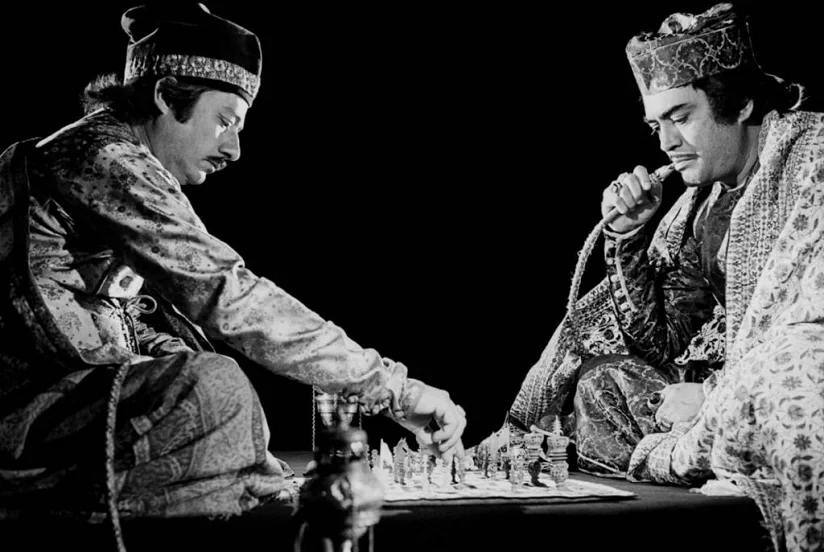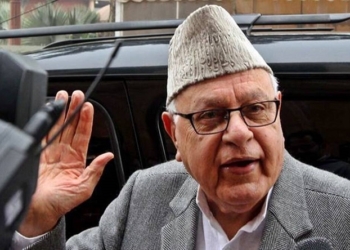
Inayatullah Din
SHATRANJ, was actually Munshi Premchand’s short story which was thematized as a movie by Ray in 1977. Unerring, he had not needed a mistake. And the name of this particular short story by a 19th century Hindi speaking intellectual on why Indians lost India. It is actually an Orientalized understanding of British power in India by an Indian. Here we are looking at the colonized Indian mind, who is critically located as a colonized subject, legal subject in the British dominated India and is reflecting with a colonized imagination on how Indians lost India. I would definitely like you to see this movie. Munshi Premchand is both a legal subject and a very critical eye witness of the indigenous systems which are being phased out before his eyes. A bit like Mir Taki Mir.
Colonial Stereotypes and bad governance
A huge range of correspondence showcases two different frames of governance. One is the indigenous style of governance, and the other is the western governance perfected in the western nation-state, as centralized, highly efficient, modern, and as understating power in the Foucauldian manner.
Premchand actually has a far more scathing understating of the Indian elite. Close to the personalized space of the Indian king. You will take a gander at the personalized rule by an Indian potentate where every word he speaks is heard with appreciation. Regardless of whether the king talks garbage, nobody can really say anything. Against this, you will find disciplined (Foucauldian sense) bodies of European official hierarchy, where there is a protocol of rigged obedient, stand to arms kind of attitude to subordinate vis-à-vis his superior officer.
Sometimes visuals can give you these frames, that too visual from heritage which is both colonial and critical. We have Ray, coming from a very long pedigree line of a colonized, highly influential Bengali family, and therefore, Ray actually has internalized the critical, and at the same time colonized imagined spaces of these commentaries on what had been the problem with Indian ruling cultures. The movie uses strong visuals via court and (British) correspondence in order to put together a historical/historized representation of the Indian elite.
The story has several domains. The first most important domain is the emerging political domination of the British. The second most important domain is the micro-level of power which in this case is the Kingdom of Awadh, which has the last nawab (Wajid Ali Shah) in place.
Wajid Ali Shah and the kingdom of Awadh have had a long history of running up against the British, militarily right from the 1740s. And it is these coming together of various Indian powers against the British paramountcy which has cost Awadh her token freedom. Awadh has actually been incorporated in a treaty which is a metaphor for being completely dominated by the British power in India. So, this is the subsidiary alliance, where a resident (General Outram) is pushed into Wajid Ali’s court, where he reports on how he conducts governance on a day to day, monthly, and yearly basis. Which sums it all up as part of a rather imperialistic pin and which seeks to record only the flows of these Indian princes. And this is what the resident at Lucknow does too. This is the domain of microchips of power, the indigenous kingdom with limited understanding of power but in Wajid Ali’s eyes huge power.
In this way, we are exploring how Satyajit Ray places Wajid Ali Shah on a larger power nap, where his notions of power seem to be very petty, stupid, and very short-sighted coming from the resident’s analysis. But from Nawab’s own point of view, he is hugely powerful (symbolized at the beginning of the movie when he sends his crown to be displayed in the Crystal Palace exhibition). Furthermore, this limitless power is encouraged by the language of the courtiers use in his courtroom. His shayari and songs are taken as the last word in poetic excellence. His very ambiguous understanding of being fantastically a good Muslim is bracketed within his fascination with Lord Krishna and his gopis, which he constantly enacts in his harem.
Relative understanding of power and the blindness of the Indian ruling classes.
We have Wajid Ali Shah becoming a Sufi saint on the streets of Lucknow, beating the drum, attracting huge crowds who obviously love him. We also have exuberant fun-loving public of this particular region who understand the king as a lovable monarch. That’s where the connection between the state and the people ends. So, we are looking at this dissatisfaction of these disjunct people and the Nawab at a level of governance. But at a level of connectivity, they are connected. This was their understanding of kingship, territory, realm, which was very strange in the English sense.
This particular Nawab is conscious of the shadowy power of Queen Victoria, and his mother is equally conscious of this shadowy presence of the English monarch across the oceans. And it is this clockwork regiment of the English officialdom which uses the language of treaties, revokes the agreement of treaties, which breaks the treaty turns as in when it suits them, which actually begins to happen from the 1850s onwards. This is the background story of the two domains of power. One which is contemptuously dismissive of the assumptions of grandeur at these local kingships assume.
From the late 1840s, the East India Company was contemptuously dismissive of these hollow crowns. But for Nawabs, these crowns definitely do not seem hollow to them. Nawab understood their power which was very real, tangible, and which he didn’t want to let go of. There was a disjunct of domains of power, understanding of governance, authority, and control.
The misreading of the modern nation state. The misreading of the modern contract and notions of legality (symbolized by company’s attempt in brushing aside the earlier 1837 treaty). Misreading of authority and power. Misreading of the relative values of the Indian kingdoms viz a via the sovereign power of the British monarchy. Image credit: Devki Chitra, Productions (Suresh Jindal).
These pumped-up (princely) states did not understand how much they have had become dependent on the British. It was only at the moment of a military confrontation that they realized that they did not have armies. Because the armies were taken over by the company. They don’t have weapons because weapons have been banned. They don’t have any hold on the people because they can’t pass laws. They don’t hold to their borders because they don’t have any diplomatic power to make alliances with other kingdoms. The treaties under which they operated had been quietly changed. We have treaties been breached and the complete helplessness of the queen mother (Aulea Begum) appealing to queen Victoria in a very emotional petition.
It comes with a modern sense of bitterness on what India had lost and how. Ray is just reconstructing it, where queen mother doesn’t understand that England is England. She calls England Englishthan like Hindustan. (Englishthan ki Rani Sahibah like I’m the rani sahibah of Awadh).
Social Domain and the location of elite time
The social domain is divided into men and women. The masculine men (Mir–Mirza plot) with military histories within their families, which they kind of use to patch each other, there’s no real power. There is just mythical belonging to martial family history. They are just passing the time. They don’t live through times. This is a very important difference which Ray is making in the way the English and the Indians occupy the frame of time. Where Indians pass it, and the British makes it work. They play chess. Shatranj ke Khidali is actually from this understanding of the location of the elite time. But they miss the larger moves on the Indian chessboard.
The film is looking at two chess boards, one which is a very small-time game and the other which is played by the British with the Indian kings and ruling elite. This is going to be the level of the domain of the masculine occupation, and the masculine notion of power, masculine notion of masculinity.
There is a women’s domain which is highly politized at the level of the domestic. There is a women’s domain that is highly politized at the level of the domestic. They aren’t powerless. But they are even more blind than the men as to what is political power. We have only some rare insights that come from the queen mother.
The central hub of the entire movie is Wajid Ali Shah, with whom sometimes Prem Chand Munchi sides, sometimes commenting, sometimes compassionate, and sometimes he uses the framework of the oriental despot as developed by the western stereotype of who is an oriental ruler. Prem Chand used the modern eye, colored by western expectations/norms of good governance, and the long-held discourse of the rule of law, law & order, and the penetration of the state.
Orientalism as a larger framework (best symbolized by a dialogue between General Outram and Colonel Weston). The movie gives you the domain of substitution & subjective power.
This was the 19th century when imperialism was high and deeply penetrated into the psyche of the middle class educated communities across India. And these discourses have taken a deep hold about what the expected governance, administration, and the state deliver. On all these accounts, Wajid Ali Shah falls way short. He’s composing Shayari on his throne when it is fariyad for justice. Running from British arms, he says, ‘I did this when I was sitting on a throne’.
It’s tragic, it’s comic, but it’s not romanticized. Huge difference in visual effects. Other films (like Rang de Basanti, Mangal Pandey, Padmavat) are romanticized in which the elite is highly conscious of what is happening. But that’s not the case in Ray’s projecting. If you are a student of history, you will find the Shatranj Ke Khalidi a good educative project.
The film gives frames of the colonial stereotypes on good/bad governance, bad Indian rulers who need to be deposed, and more flexible Indian rulers, more manipulable by the East India Company. All these issues are going to be highlighted by this movie. The movie highlights a fairly syncretic notion of governance which actually stays were lightly the Indian population, regardless of religious affiliations of any kind of community. The movie highlights the pluralistic society and the understanding of the Indic syncretic culture, which is being formally smashed by a modern nation-state and its representative in the East India Company (epitomized in the final game played by Mir and Mirza wherein the Indian Wazir is replaced by the British Queen). ‘Annexation of kingdom means annexation of culture’.
- The author is a researcher
Follow this link to join our WhatsApp group: Join Now
Be Part of Quality Journalism |
Quality journalism takes a lot of time, money and hard work to produce and despite all the hardships we still do it. Our reporters and editors are working overtime in Kashmir and beyond to cover what you care about, break big stories, and expose injustices that can change lives. Today more people are reading Kashmir Observer than ever, but only a handful are paying while advertising revenues are falling fast. |
| ACT NOW |
| MONTHLY | Rs 100 | |
| YEARLY | Rs 1000 | |
| LIFETIME | Rs 10000 | |












